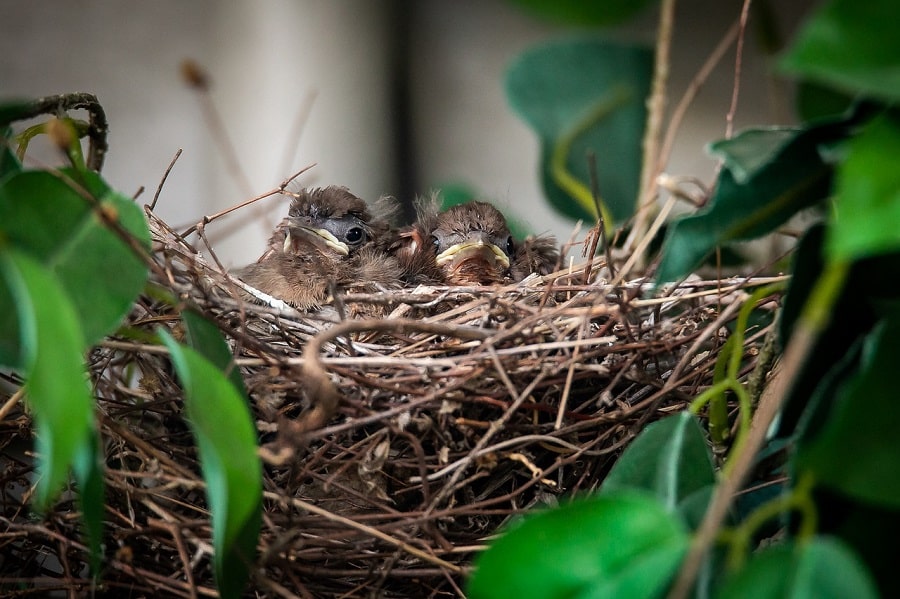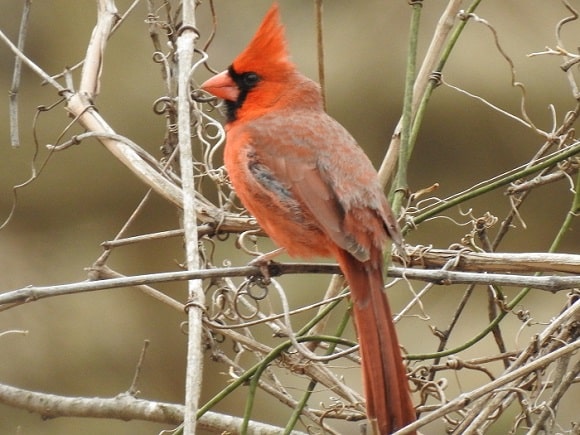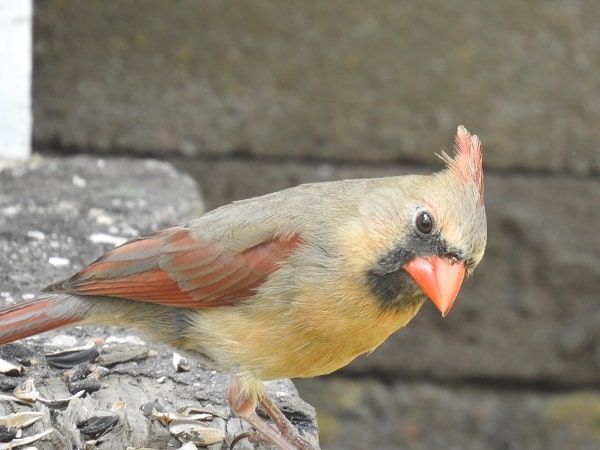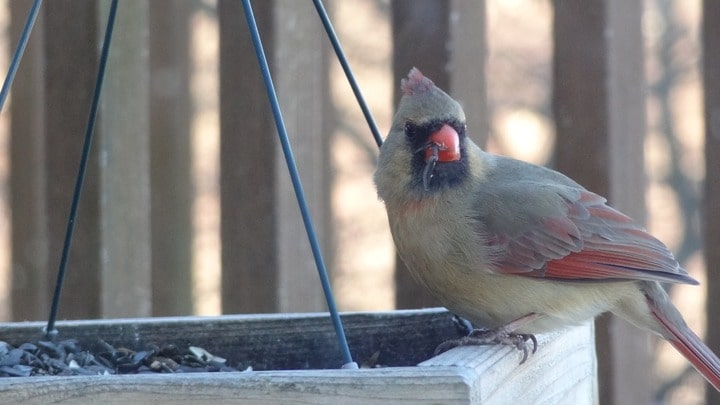Recognizing the Nesting Style of Cardinals
Knowing the differences in the type of nest a bird builds will help you identify what birds are living around you without actually seeing the bird who built the home.
A cardinal nest is one you're likely to come across since they often build in urban backyards and city parks.
So, let's take a closer look at what they look like, where you're most likely to find them, and the roles both male and female birds play in the process.
Appearance: Small But Sturdy

The Cardinal builds a small but sturdy nest, measuring about 6-8 inches wide on the outside and 3-4 inches across on the inside - perfect for a clutch of eggs.
The structures are cup-shaped, just like you would imagine a typical bird nests to be. Crafted from a mix of twigs, bark, leaves, grass, and sometimes even pine needles.
These highly adaptable birds might even use unusual materials, especially in urban areas.
Materials like paper strips, bits of string, or even cellophane might find their way into the construction.
Despite the type of materials used, the structure remains secure enough to hold eggs and, eventually, growing chicks.
Who Does the Nest Building?

The process of building is a team effort, but the female takes charge of the actual nest construction.
While the male helps by gathering some materials, his main job is guarding the site and the female from threats.
It's the female that will carefully weave the twigs and other materials into place. She may even use her beak to crush twigs, making them easier to shape.
Once the outer framework is done, she creates the interior by adding softer elements like grass, feathers, and leaves.
One of the more interesting things about nest building is how the female cardinal twists her body around to shape it into its distinctive cup form.
This makes it a comfortable place for the eggs she will soon incubate. On this page I have a video I captured of the female making the bowl shape.
Where Do They Build?

If you're trying to spot one of these homes, look in dense shrubs, small trees, or tangles of vines.
They prefer to place them about 5 to 10 feet off the ground, tucked away in places that offer cover from predators.
They often choose forks of tree branches and are more likely to nest near the edges of woods, fields, or even in your own backyard.
Common trees and shrubs they select include dogwoods, rose bushes, and blackberry brambles. My Japanese Maple is often a favorite site each year.
All of these plants provide plenty of foliage to help conceal the eggs and young from danger.
When Do They Start Laying Eggs?
Beginning as early as late March or early April, that's when the breeding season begins, you might notice cardinals collecting twigs and constructing their homes.
The nest building process usually takes about 7 to 12 days, depending on factors like weather and the availability of materials.
Each year, cardinals attempt to raise at least two broods of chicks, sometimes three in southern areas.
After the first brood is raised, they move to a new location and begin the building process all over again. This helps keep predation to a minimum.
While the female cardinal begins work on the second nest, the male usually takes on the role of feeding the fledglings from the first brood.
What Can You Do to Attract Them to Nest in Your Yard?

Want to attract cardinals to your yard? Start by providing a reliable food source like their favorite, black-oil sunflower seeds, on a platform or tray style of feeder.
As a non-migratory species, you can attract them to your backyard year-round.
Water is important for all birds and in winter too. Deicer's and Heated Bird Baths are available for keeping water open during the winter months.
You can also create ideal nesting conditions by planting dense shrubs and small trees, giving cardinals the cover they need to feel safe.
Male Singing to Attract Mate
In Closing
As you explore the outdoors in early spring, keep an eye out for cardinal nest. I mostly find them along park sidewalks that are lined with shrubs on one side.
Observing from a distance how and where they build provides a glimpse into the lives of these birds, adding appreciation for the wonders of nature in our own backyards.
- Tips to Help You Attract Cardinals to Your Yard
- The Different Calls of Cardinals and What they Mean
- When do Cardinals Lay Eggs
- Are Cardinals Flying at Your Windows? Here's Why
- Does Arizona Have Cardinals | There's a Look Alike Bird
- See a Season of Cardinal Nesting | Video and Text
- A few Cardinal Videos for You






